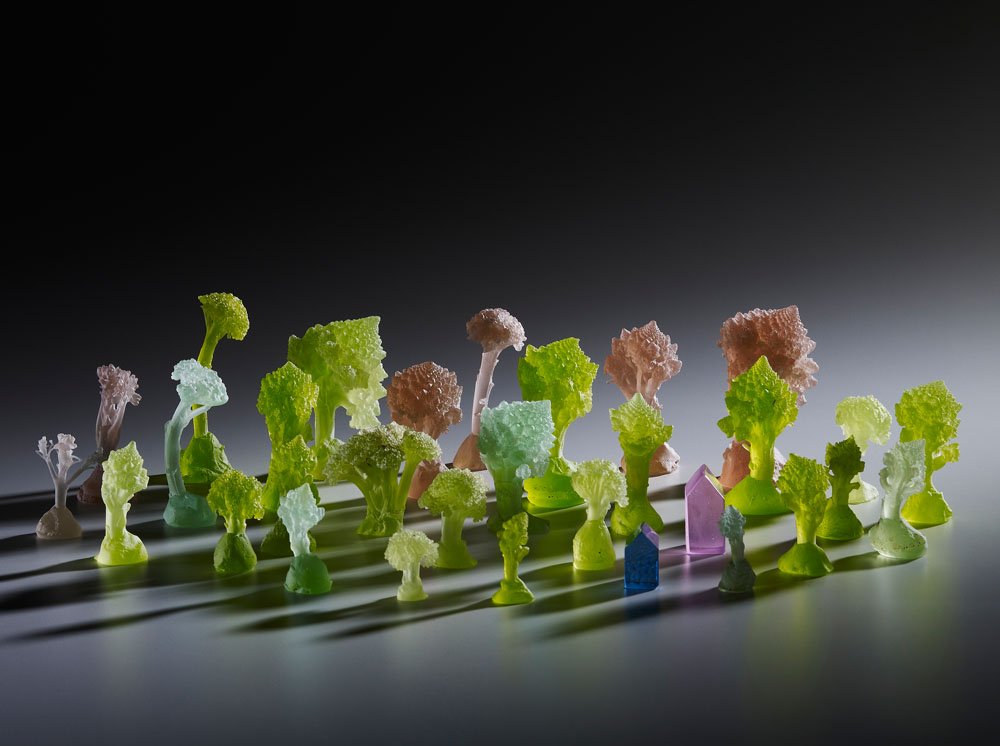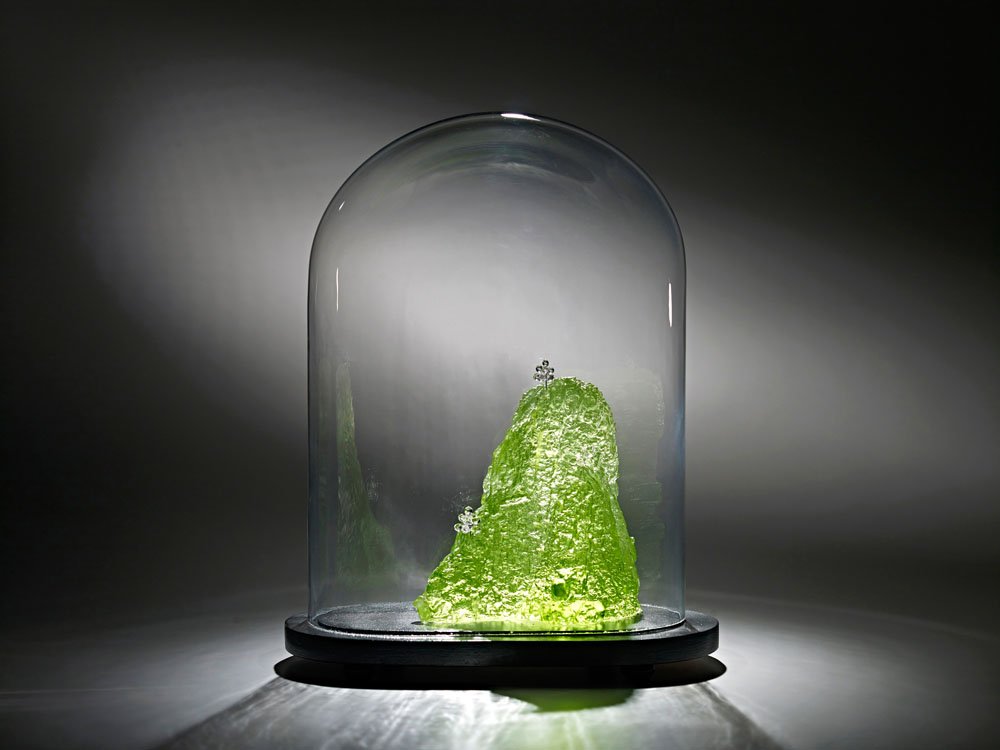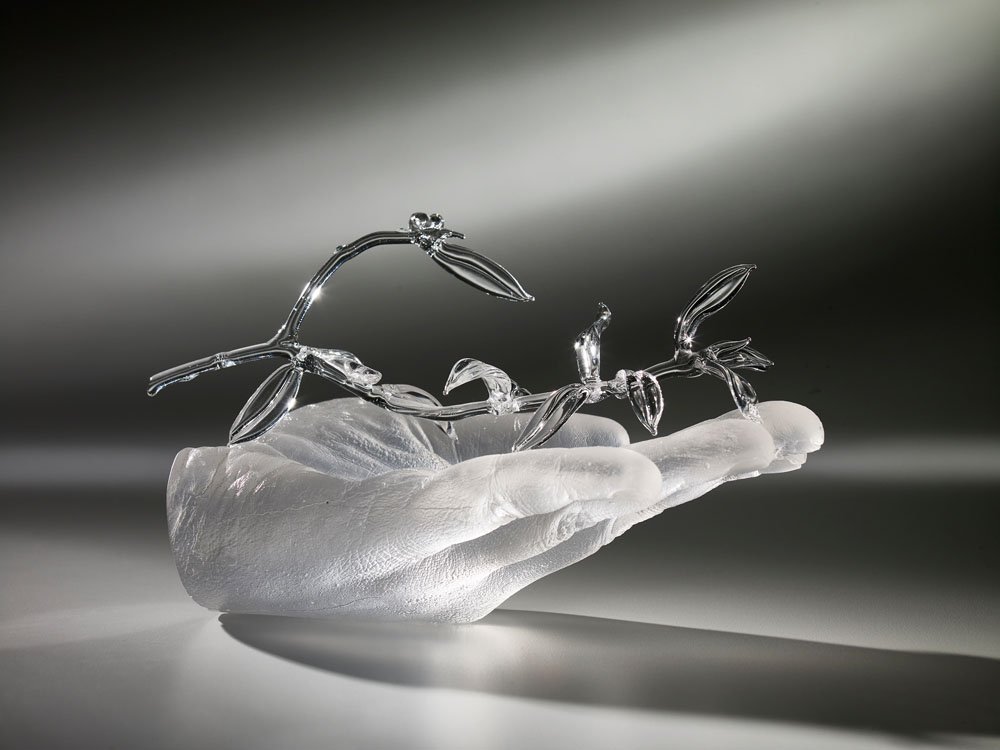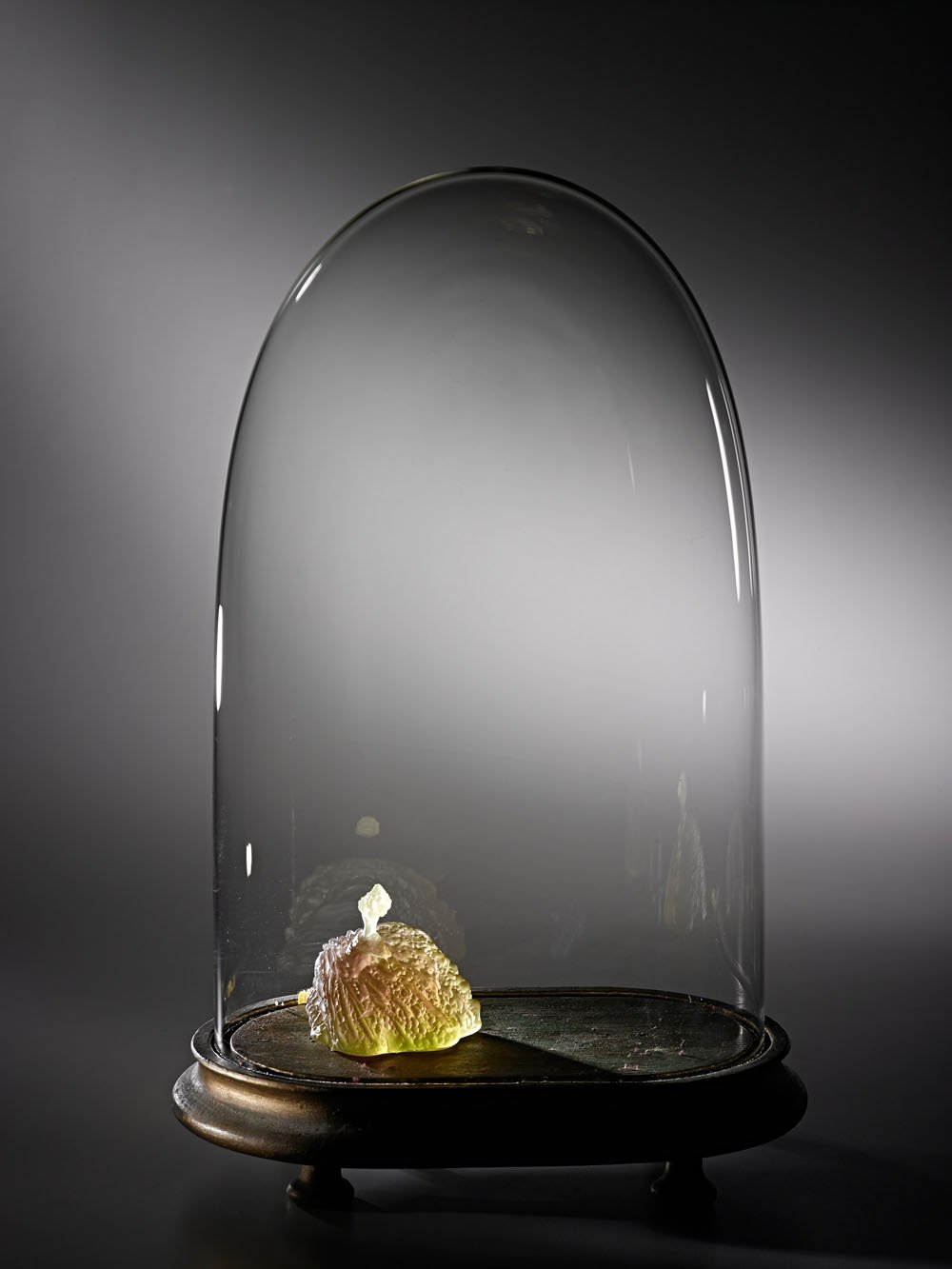Collections
Mushrooms
My work quietly evolved during the pandemic and I began to collect only things that delighted me. I began using what was close by. My fascination with mushrooms began with this pragmatic approach to discovering new things.
Mushrooms are themselves neither flora or fauna yet their lace like subterranean structures of mycelium are an integral means of connection. They are a doorway into an unseen world and of course are enchanting to work with.
-
To really appreciate a mushroom you must be willing to seek them out. You need to pay attention to the weather, the season and even the time of day. I have discovered them in the long wet grass of a churchyard. Encountered them unexpectedly at dusk in the park opposite my studio, growing in a fairy ring around a tree. Phantom like they appear overnight to fruit and by morning they have all but disappeared. I have collected them after a swim in the Pennines. I was astounded by the variety that studded the grass like jewels.
As collecting has gradually become an important part of my practice, I am constantly looking for new specimens.
-
I specialise in a technique called ‘burnout’ where the resulting cast glass pieces are unique translations of the original organic specimens.
I begin the burnout process by making a mould around the botanical specimen. I can then ‘burnout’ the original in my kiln, where it becomes ash. With mushrooms the mould making process needs to be done as quickly as possible. It is essential to get this element right in order to capture all the details.
-
Many of my mushrooms have gilded gills. The gills are especially difficult to draw and this process makes a feature of them.
In 2019 I was taught how to apply gold leaf to glass by a master gilder. I mostly use 23.5 carat gold leaf on my work.


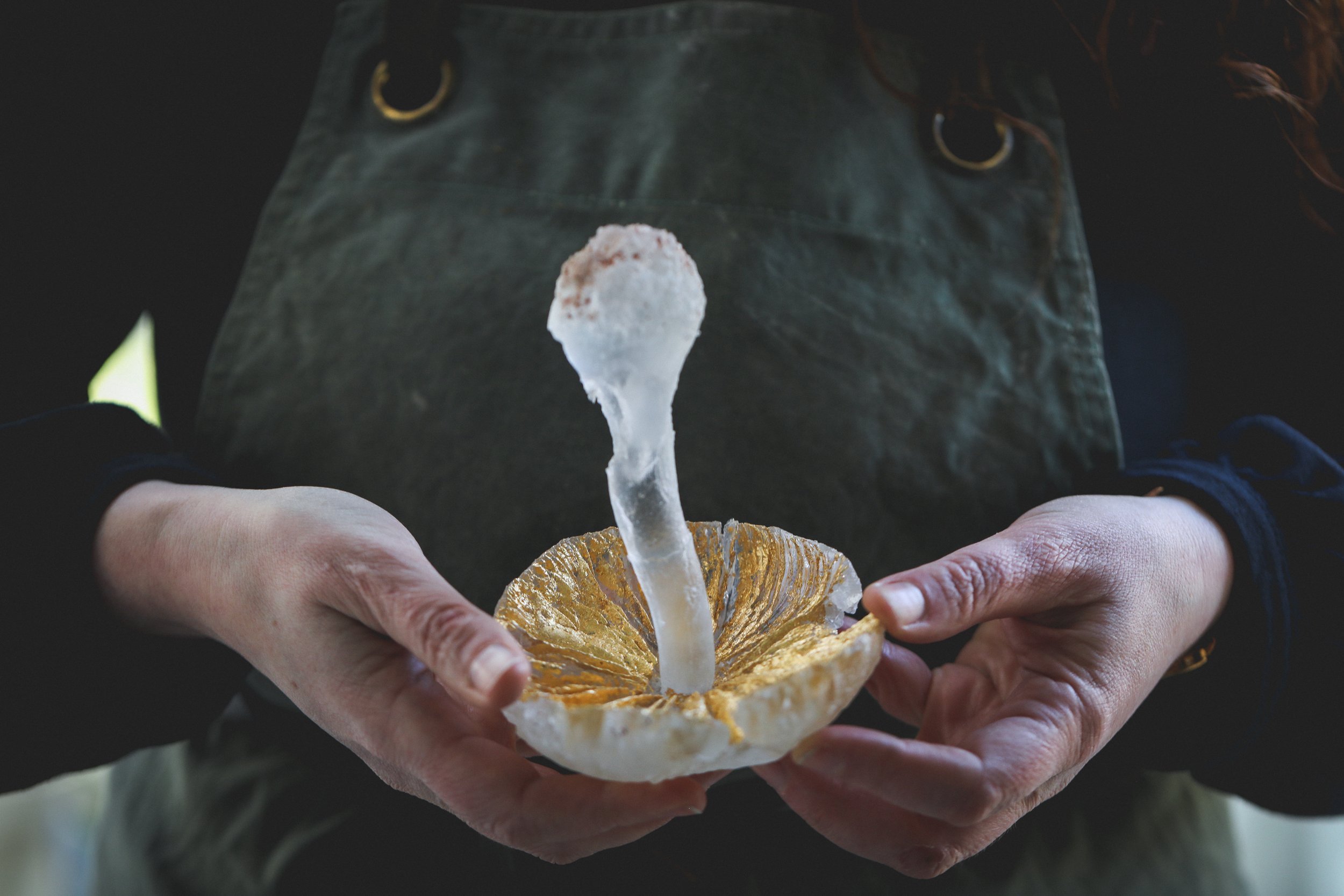

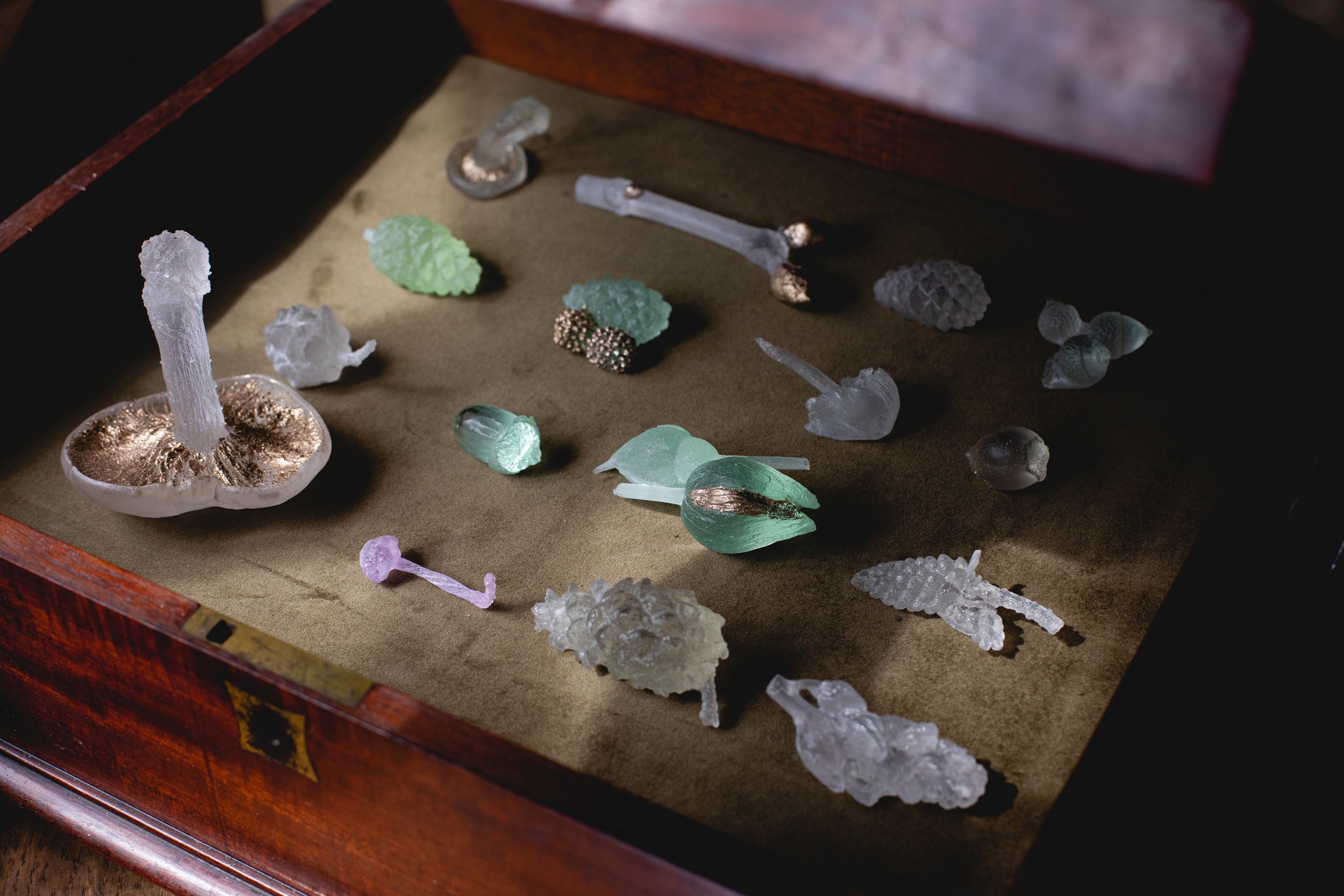


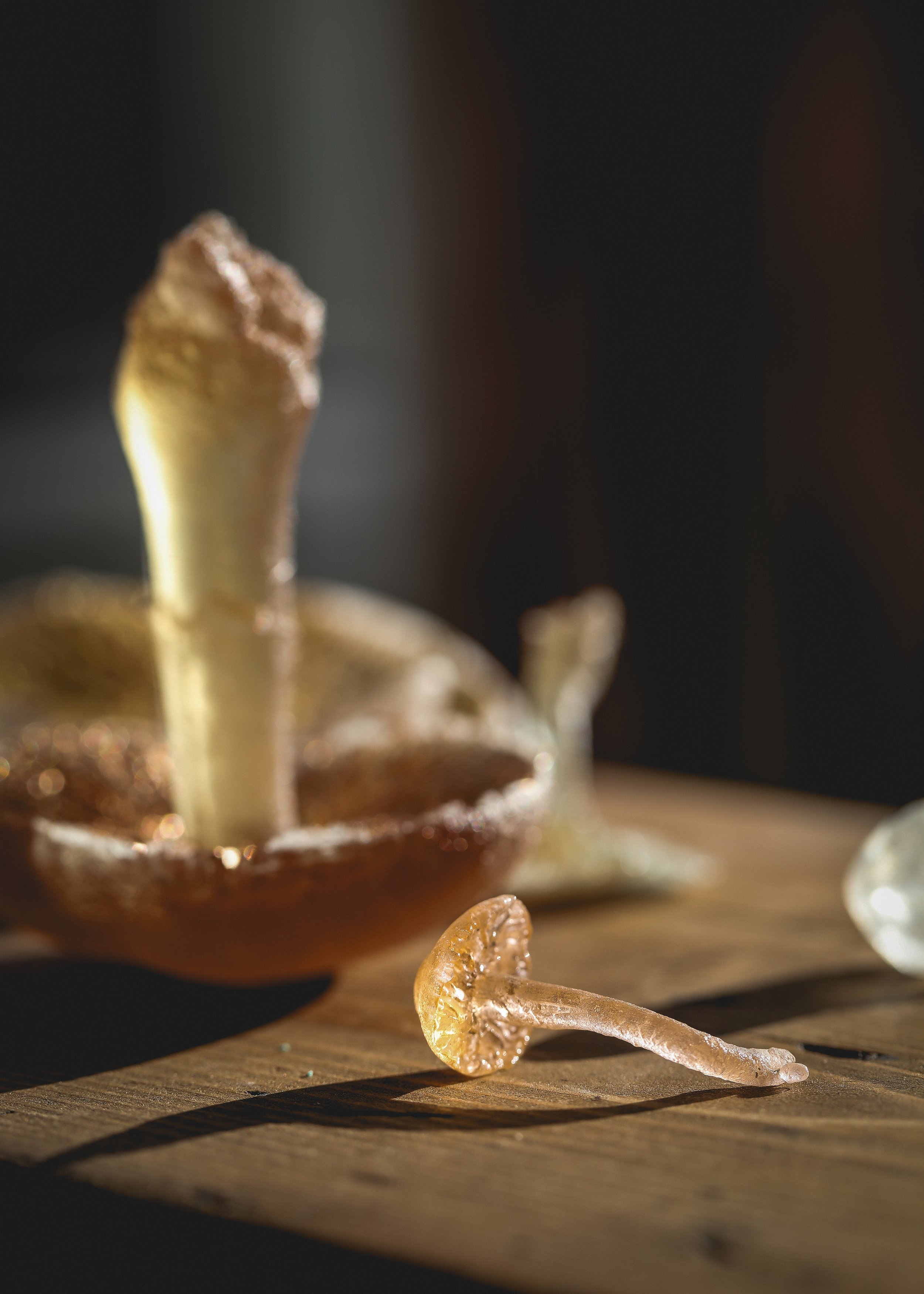

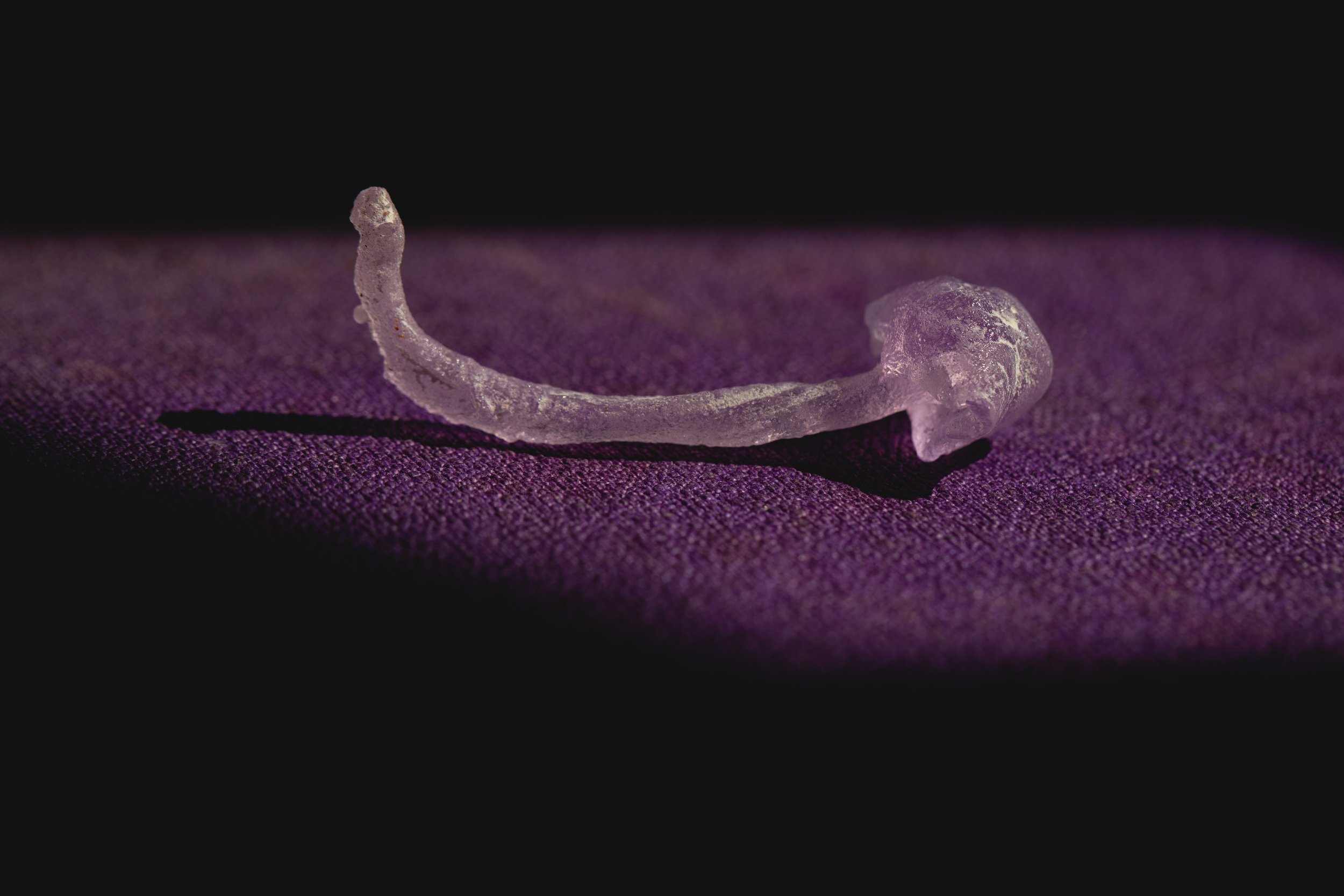
Jewellery
Learning new things has always been an essential part of my practice. In 2022 I began a residency up in the Far North of Scotland to explore the possibilities of glass as a material for jewellery in a project led by Ruthin Craft Centre, North Lands Creative and the National Glass Centre.
I became fascinated by very old things, visiting cairns and standing stones. Built where the land and the sky and the sea meet, creating liminal spaces. The three realms had a spiritual significance for the Picts who lived in Scotland during late antiquity and the early Middle ages.
The small items unearthed in archeological digs, things that would have been treasured and held close also influenced the development of my work. These tiny objects reveal so much about the culture at that time. The knowledge of materials and skill involved is breathtaking. I find it incredible that the materials used to create these pieces retain their brilliance despite centuries in the dark earth. This vocabulary of glass and gold is something that I continue to explore in my new pieces of jewellery.
The resulting show ‘Earthly Treasures’ toured from the Ruthin Craft Centre to The Harley Gallery to be displayed among the historic treasures in their museum.
-
My area of expertise is cast glass. A traditional technique used to shape glass long before the Romans invented glass blowing.
I specialise in both lost wax casting (the snails, sea shells and butterflies are made using this method) and a technique called ‘burnout’ where the resulting cast glass pieces are unique translations of the original organic specimens (the oak, gorse and fir twigs were made using this technique).
I begin the burnout process by making a mould around the botanical specimen. I can then ‘burnout’ the original in my kiln, where it becomes ash. I forage things to work with and the mould making process needs to be done as quickly as possible. It is essential to get this element right in order to capture all the details.
-
I collaborated with a scientific glass blower (based at the National Glass Centre) to create a series of glass crab claws and glass bubbles.
This craft is currently on the Red List of endangered crafts. The technique allows me to create elements that are both light and strong- borosilicate glass is used to make lab ware. It also works with light and reflection in an entirely different way from cast glass, giving the resulting pieces a magical quality.
-
I learnt how to engrave glass in a Bavarian Forest under the expert tuition of Katharine Coleman. I use a lathe to do this. Essentially it is drawing with diamonds. I used this technique to create the seaweed and details on the crab claws. Although it looks delicate and subtle, the pieces cast dynamic shadows.
-
In 2019 I was taught how to apply gold leaf to glass by a master gilder. Thankfully this craft is no longer on the Red List of endangered craft. I mostly use 23.5 carat gold leaf on my work.


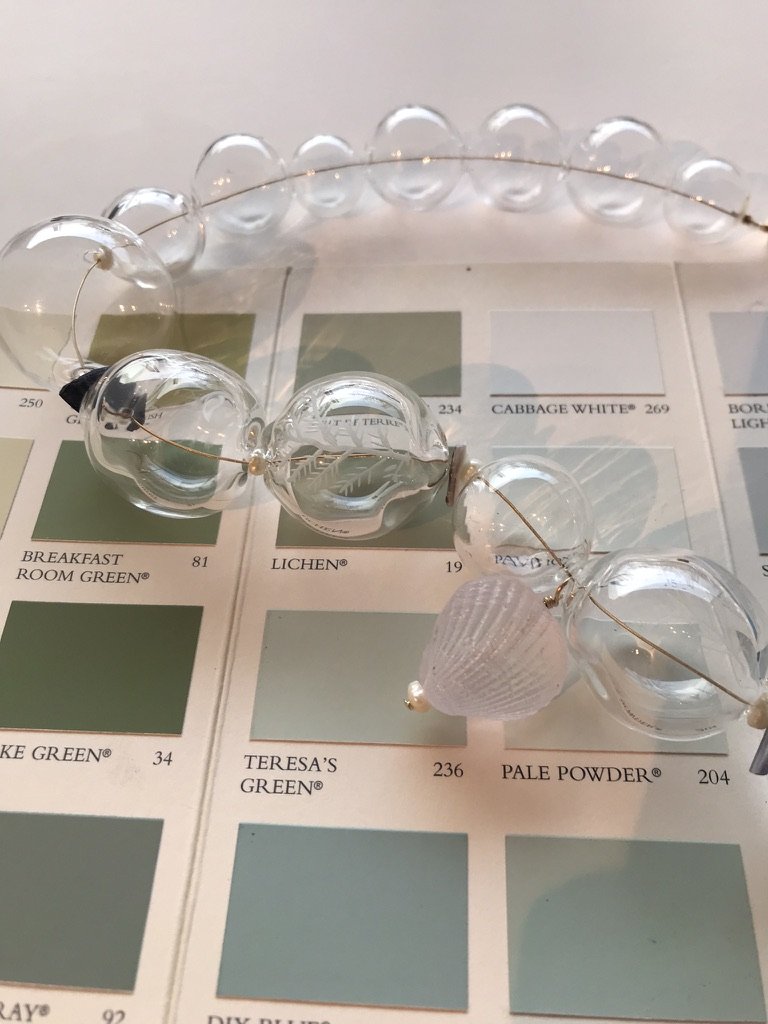

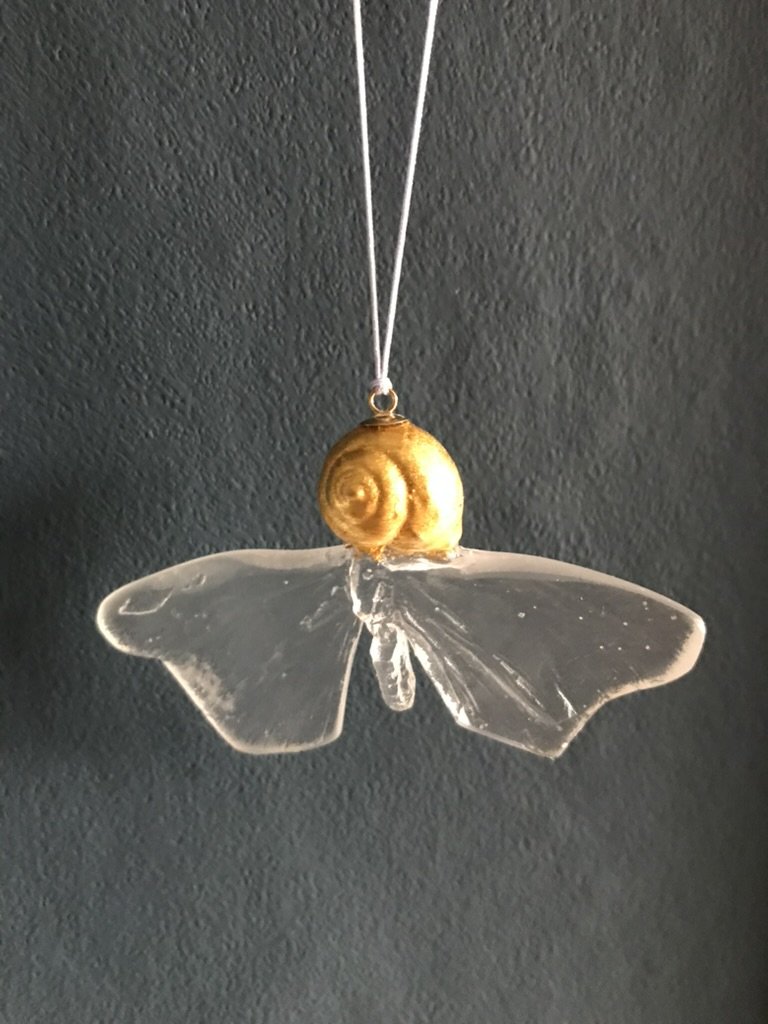
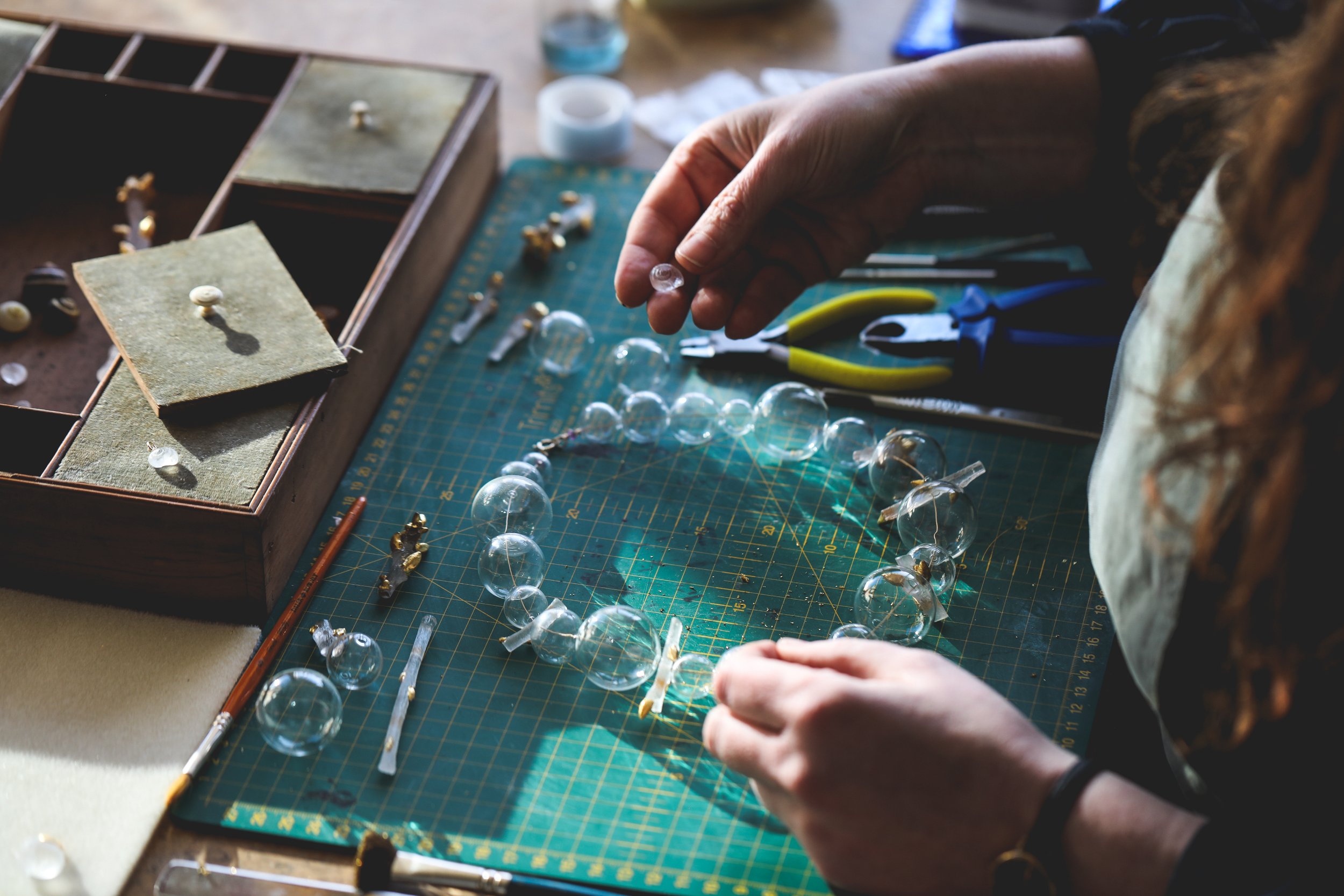
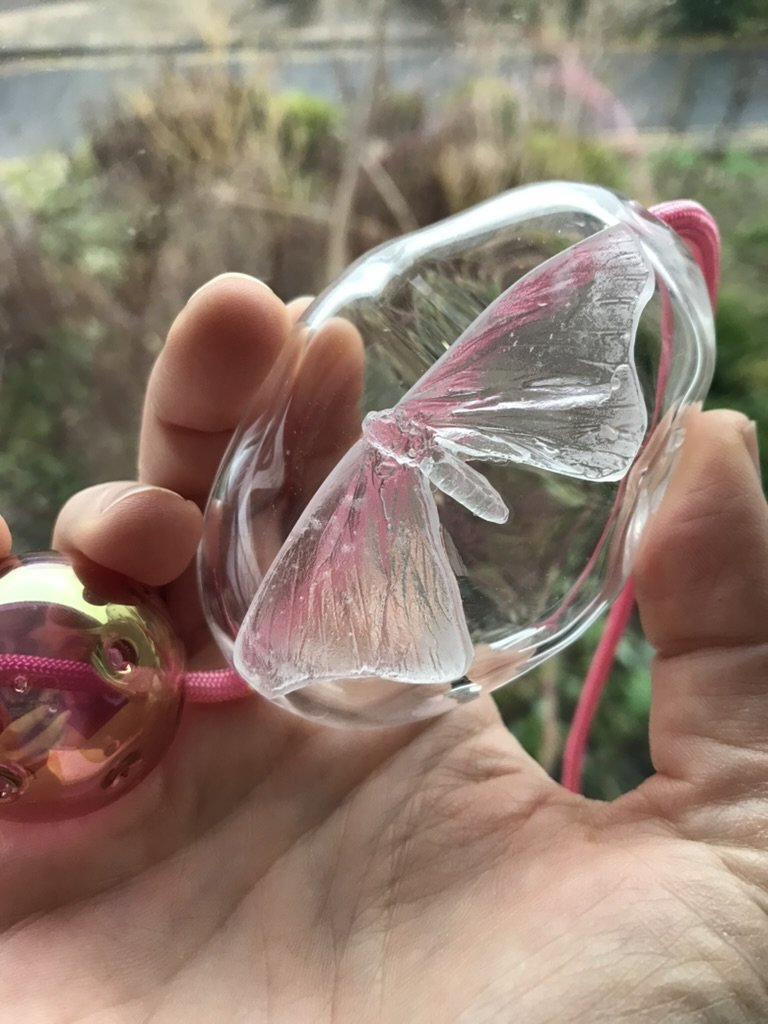
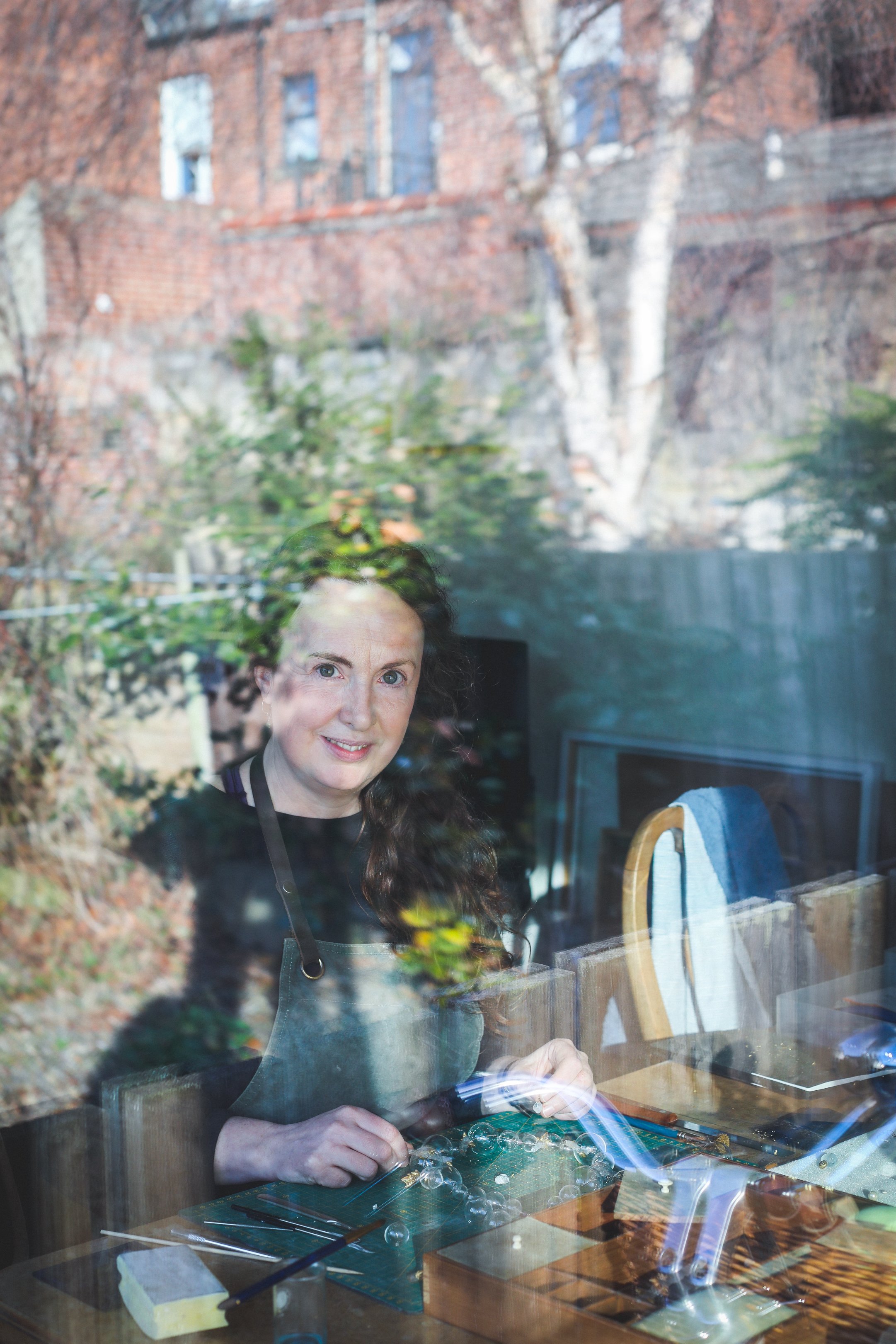

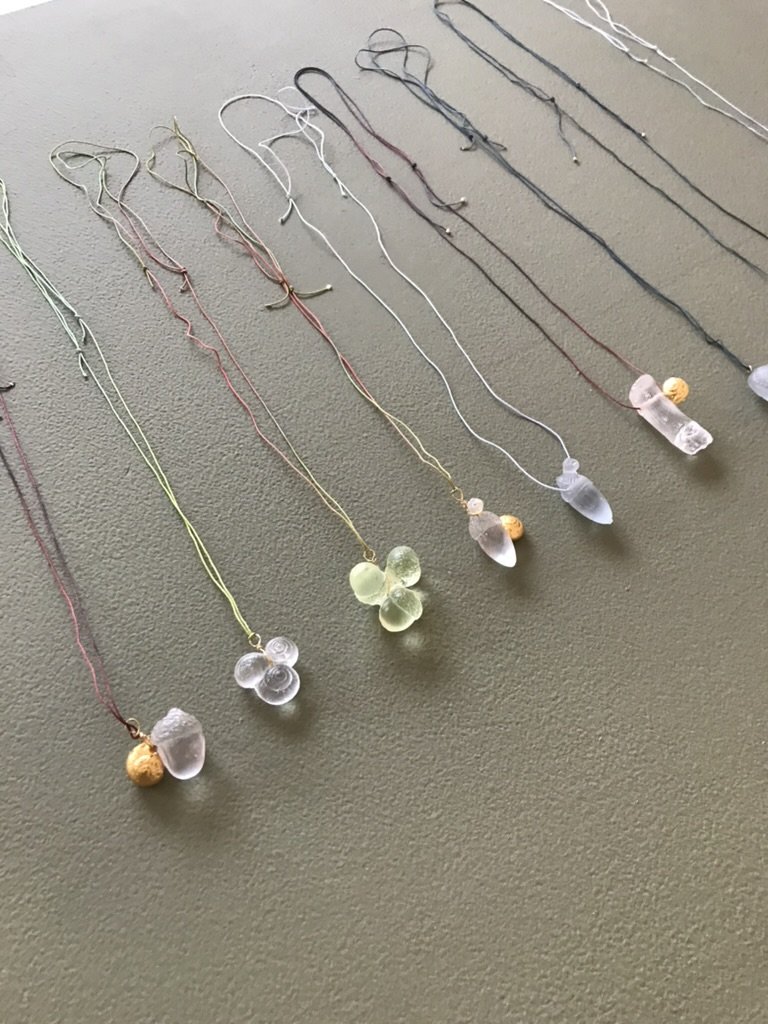
The Botanical Series
I began this series while attending a summer school in a Bavarian Forest. I collected cobnuts and acorns, things that felt familiar, suddenly seemed remarkable so far from home. I began to pin them together to make new forms.
-
Inspired by Archimboldo, a painter who made extraordinary portraits of people using fruit and berries, things collected from the land and sea. I began to make a series of clusters with gilded detail.
-
On my return to England I continued to collect, the clusters began to reflect trips to stately homes, or walks in the park.
They also began to say something about the weather too, finding mushrooms in unexpected places.
-
My current artistic practice has become about the need to have a much deeper connection with the natural world and through the process of casting about preserving natural objects in a precise moment of time, creating a series of earthly treasures.
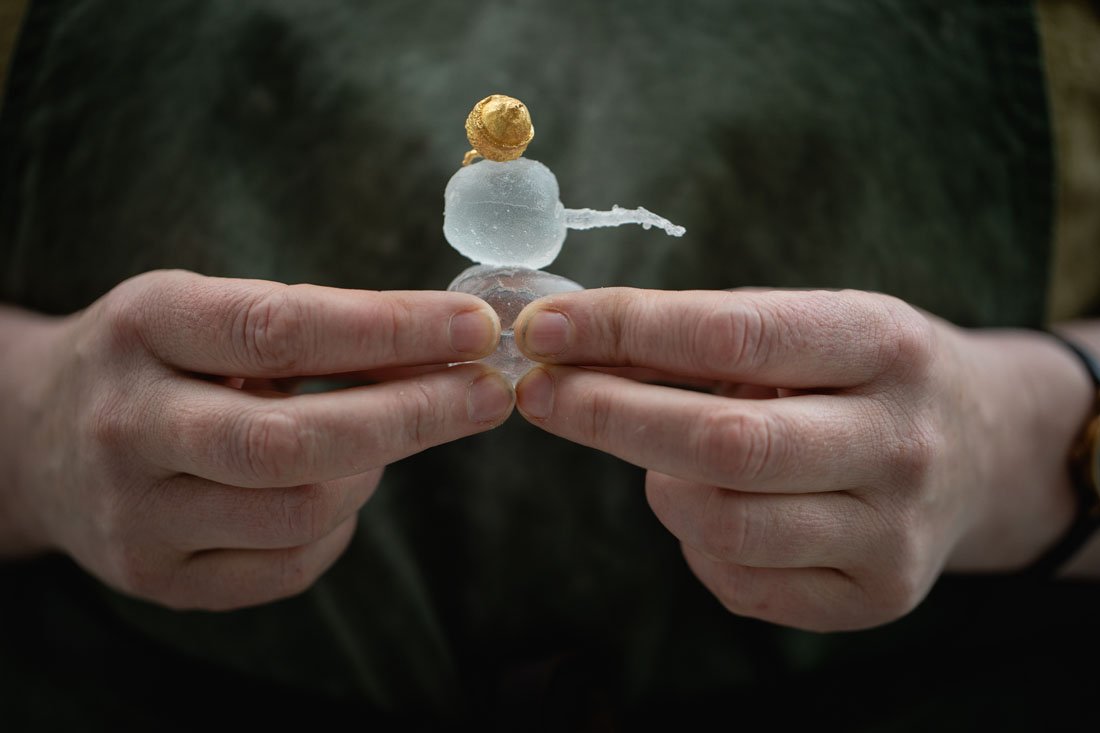

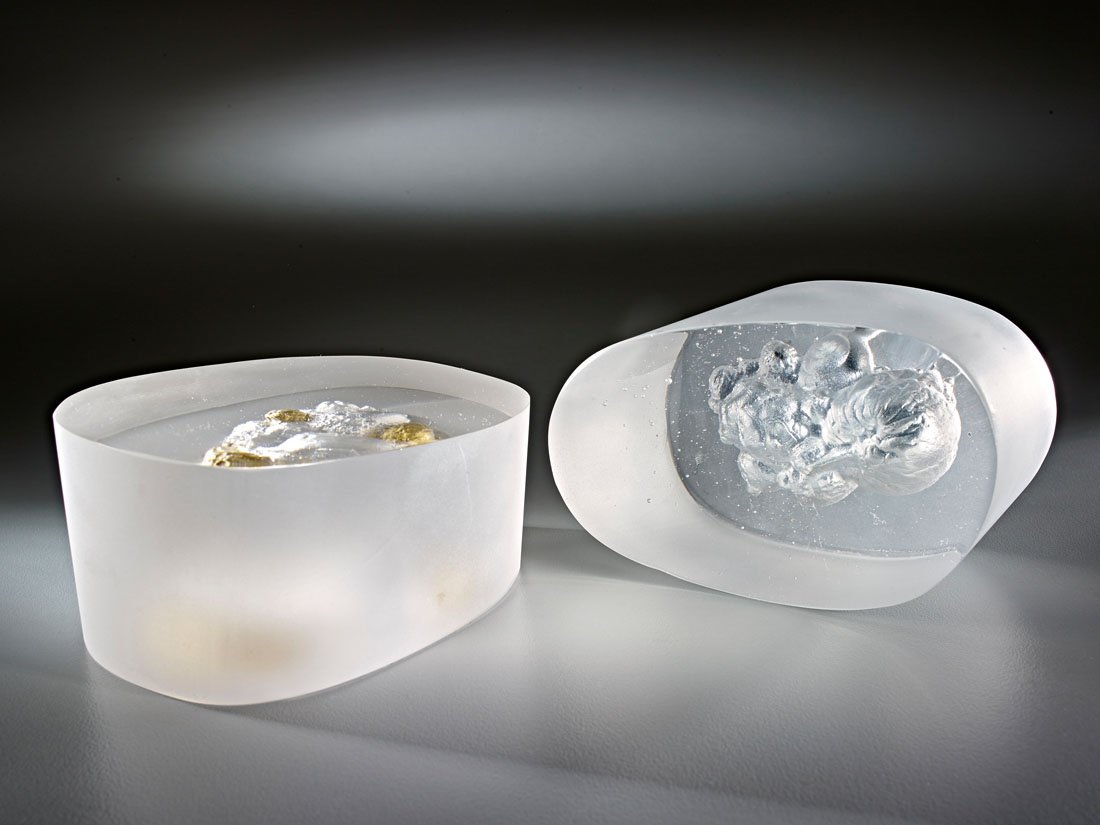

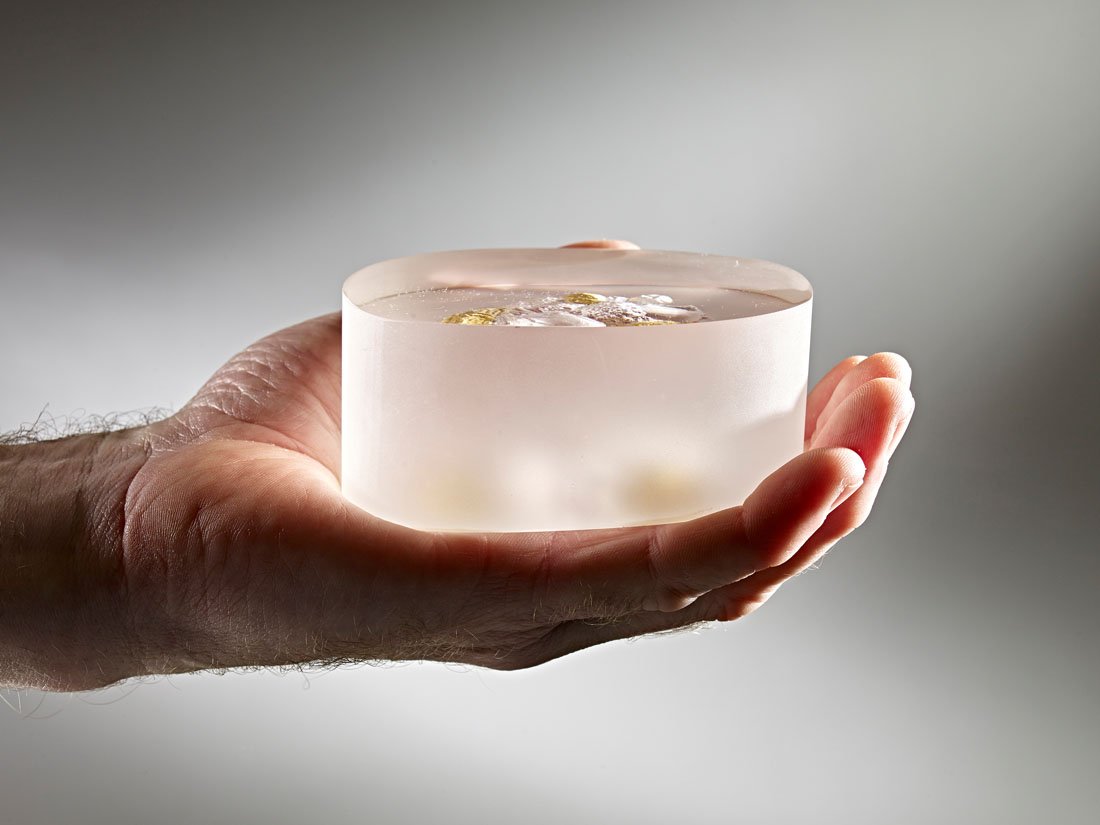






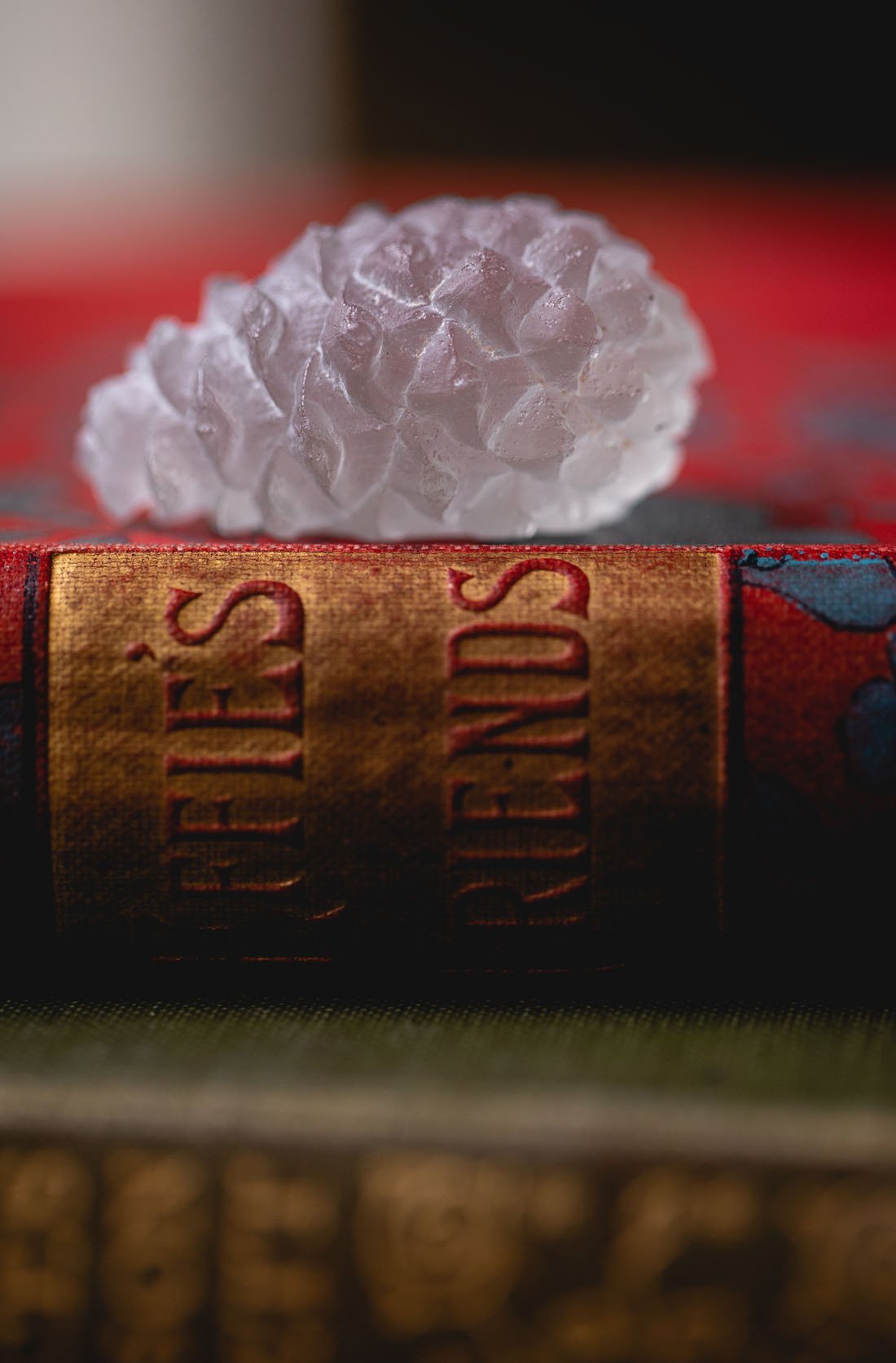

The Box Series
I spent part of my childhood living in a museum. Since that time I have been fascinated by how things are protected, curated and displayed.
Made during a time of restriction, these botanical specimens were collected on walks during the pandemic.
-
Both the antique Chinese lacquer box and the plainer sarcophagus box date from the eighteenth century, from a time when people travelled the world to collect botanical specimens. This era of collecting was often based on exploitation and extraction. Yet these collections continue to provide us with knowledge today.
-
The work was made in Whitby where Captain Cook originally set sail. I want to explore how my work could invite people to attend to nature and want to preserve it for future generations.
-
I am interested in the ability of art to open up a poetic space for knowledge to exist. And how it serves as an antidote to times of chaos. It can also ask the question- what happens after we start to pay attention?
‘Casket’ has recently been purchased by Bradford Museums with funding from the Contemporary Art Society. It will be part of a new display that explores climate change.

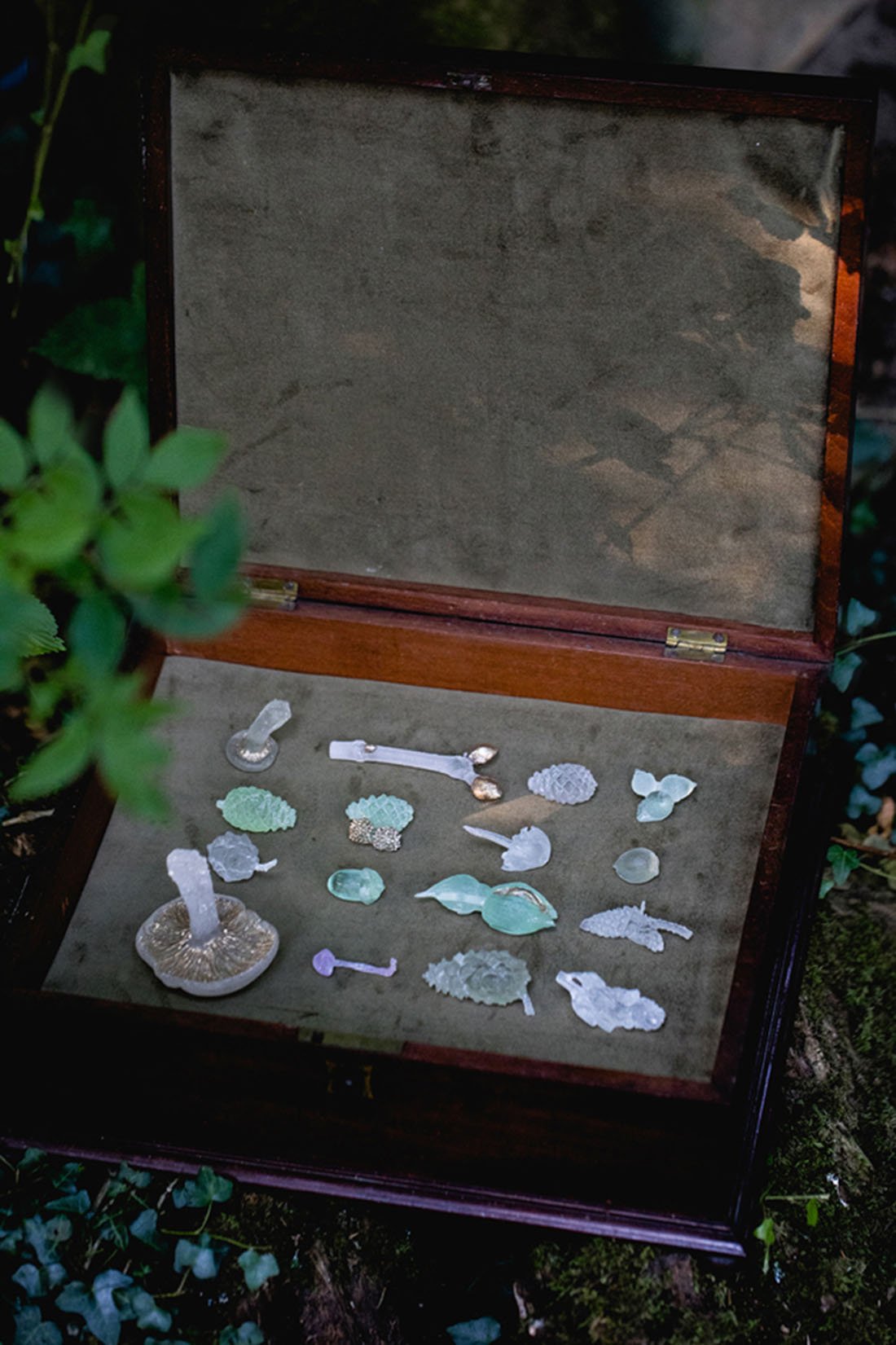
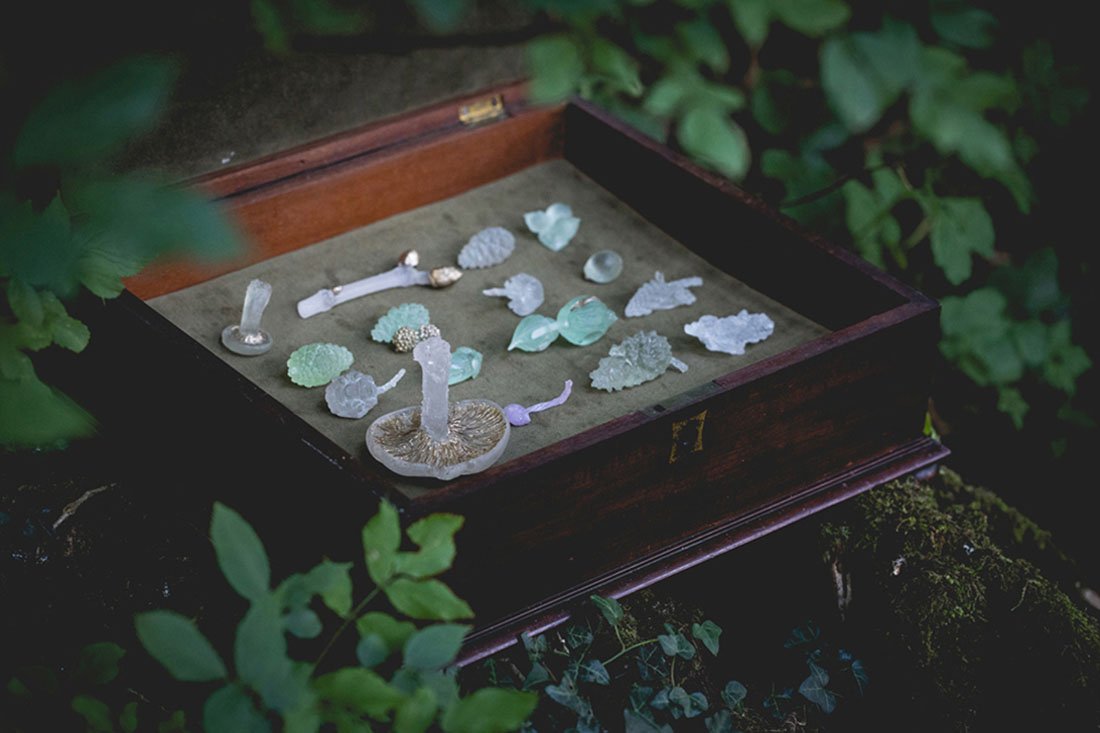
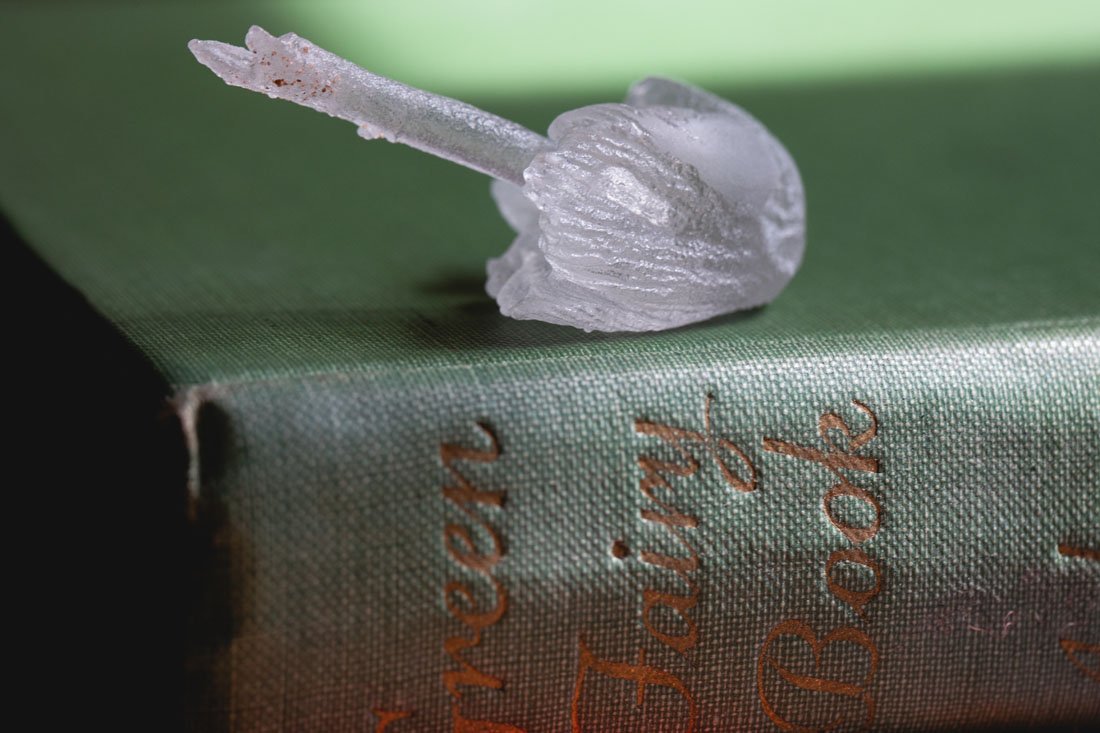
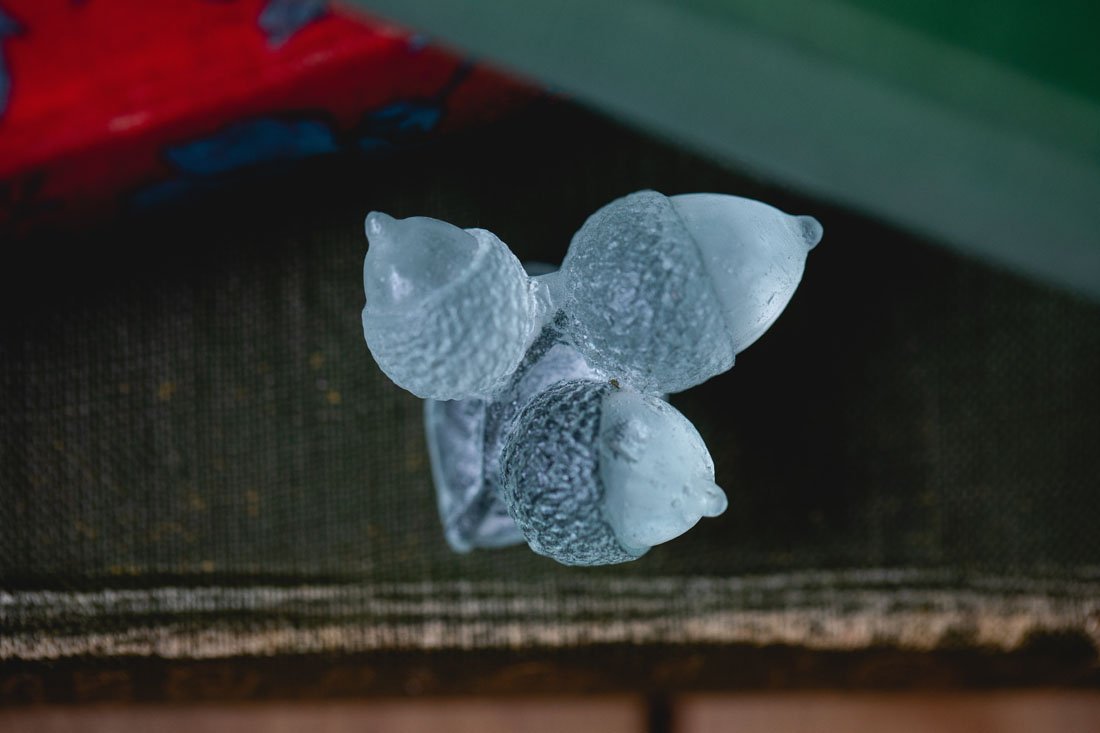


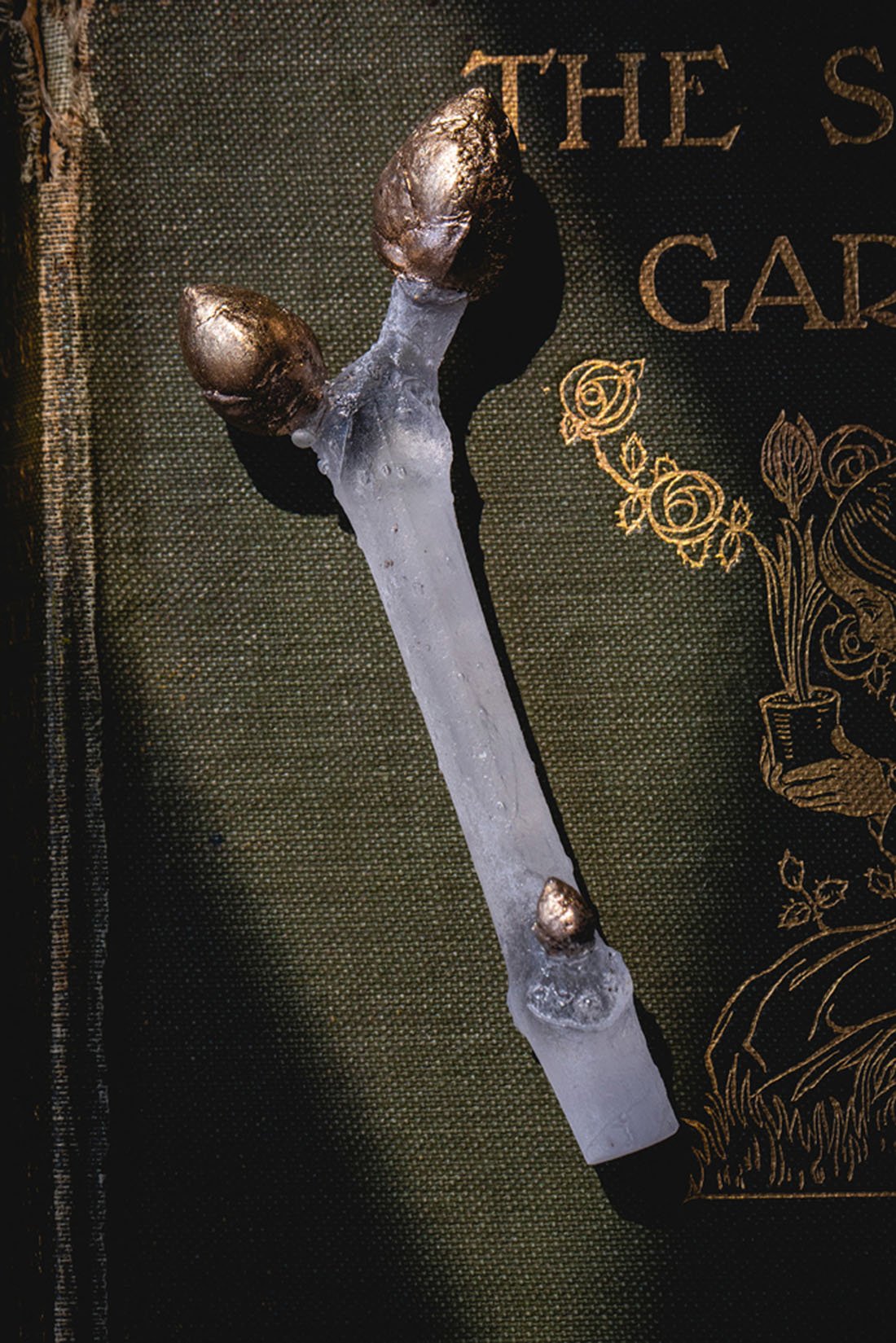


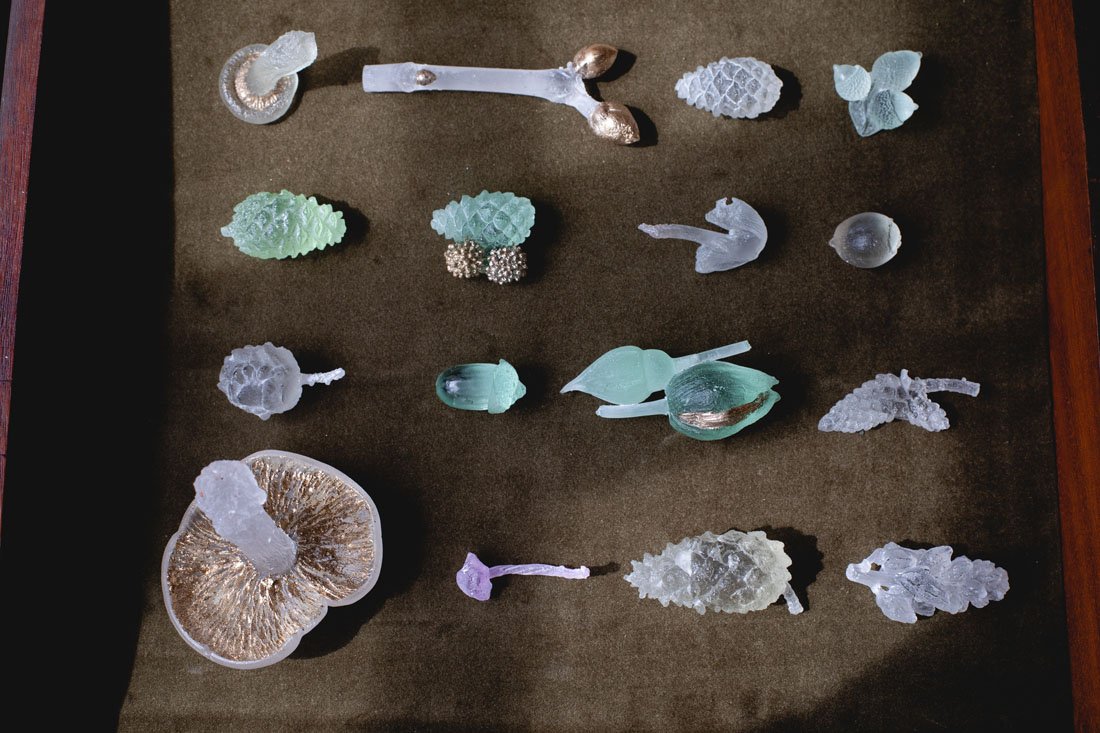
Prints
Learning new things has been an essential part of my making process since my Queen Elizabeth Scholarship Trust bursary in 2012.
Printmaking and its associated processes present intriguing possibilities to explore new ways of capturing and recording nature. As I developed a new language of making I discovered I could create work that captures the experience of being out in the landscape. Through relief mono printing and solar plate I could work with both detail and distance.
-
Originally used in letterpress printing solar plate uses a light sensitised steel plate- the process doesn't require any acid or solvents and is exposed in sunlight. The print process has allowed me to capture things that would be too challenging to cast in glass.
-
I collect and press my botanical specimens before inking them up. I have become invested in the slow meditative practice of growing and foraging. These objects collected in the landscape mark a moment in time and my work celebrates that. The process of making has become like an alternative diary documenting the places I’ve been. Each piece has a story from a sea swim at sunrise to the tiny wet leaf discovered in a TK Maxx carpark.
I am really particular about scale and form. Often collecting leaves when they are young so they are smaller scale. This process means that each print I create is unique.
-
Using a print roller each leaf and piece of seaweed is carefully covered with a thin layer of translucent ink. The process means that the relief texture of the specimen is captured along with all the delicate detail.
-
In 2019 I was taught how to apply gold leaf to glass by a master gilder. Thankfully this craft is no longer on the Red List of endangered craft. In some of my prints I have included gilded detail using transfer gold leaf..
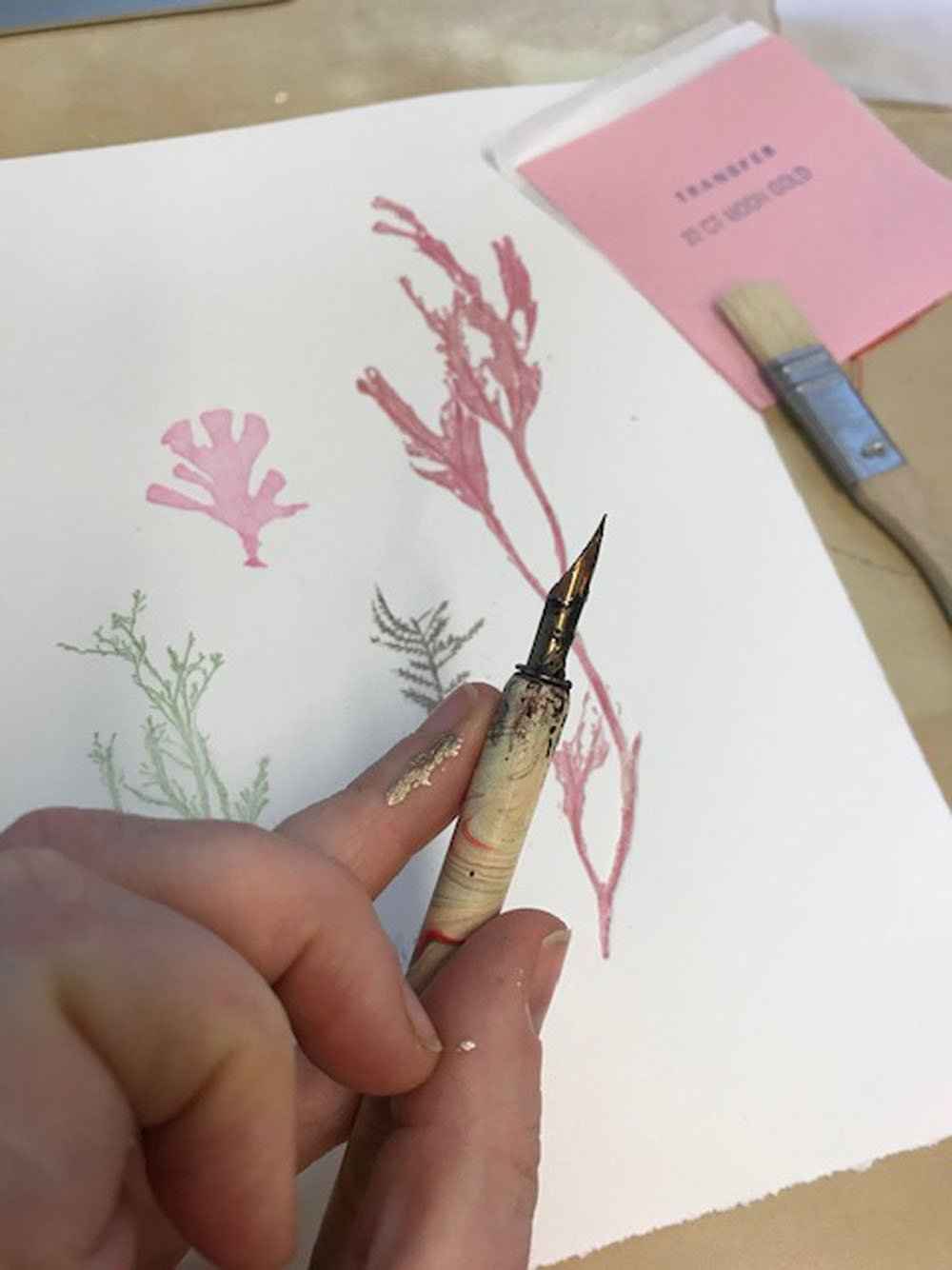
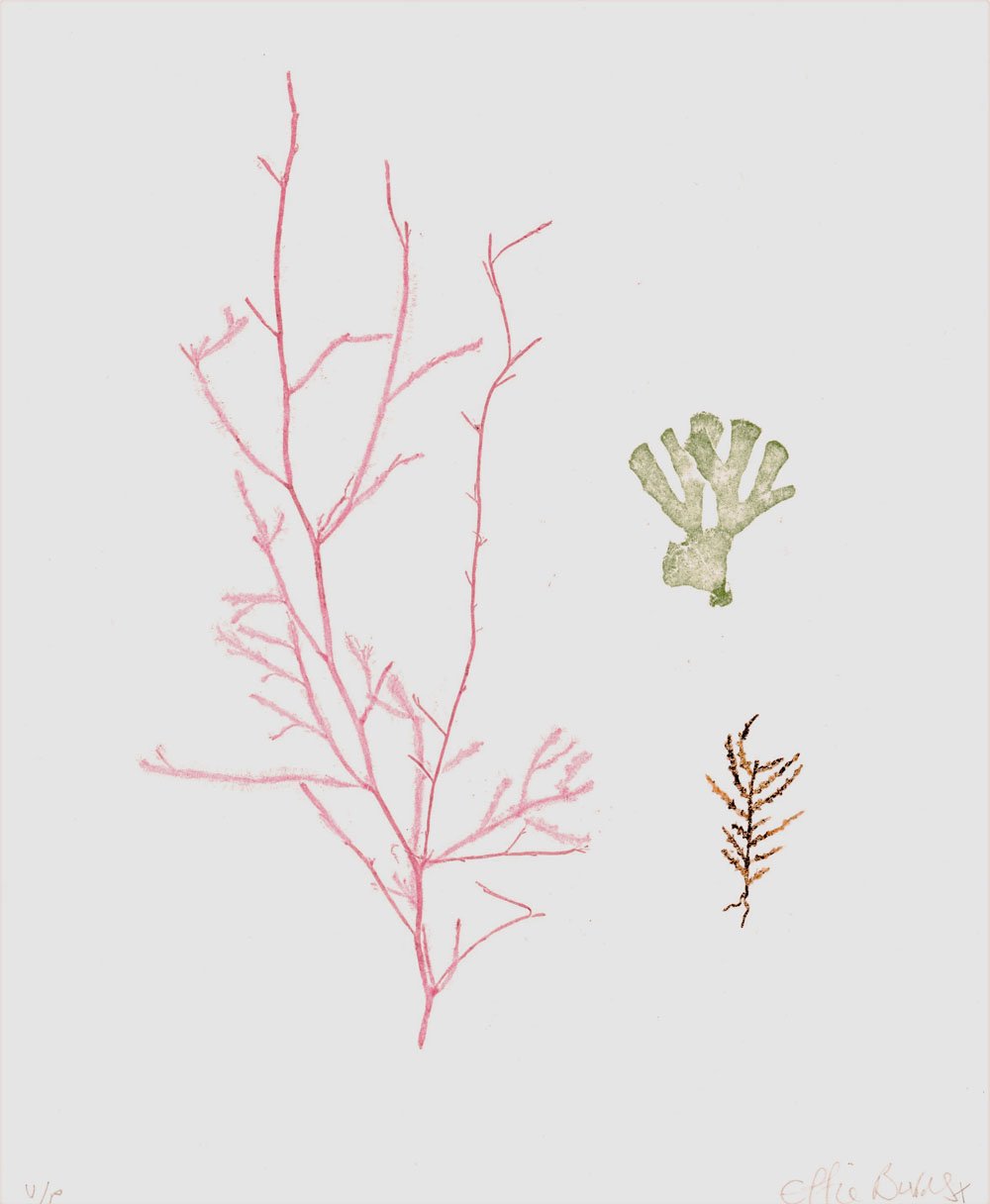
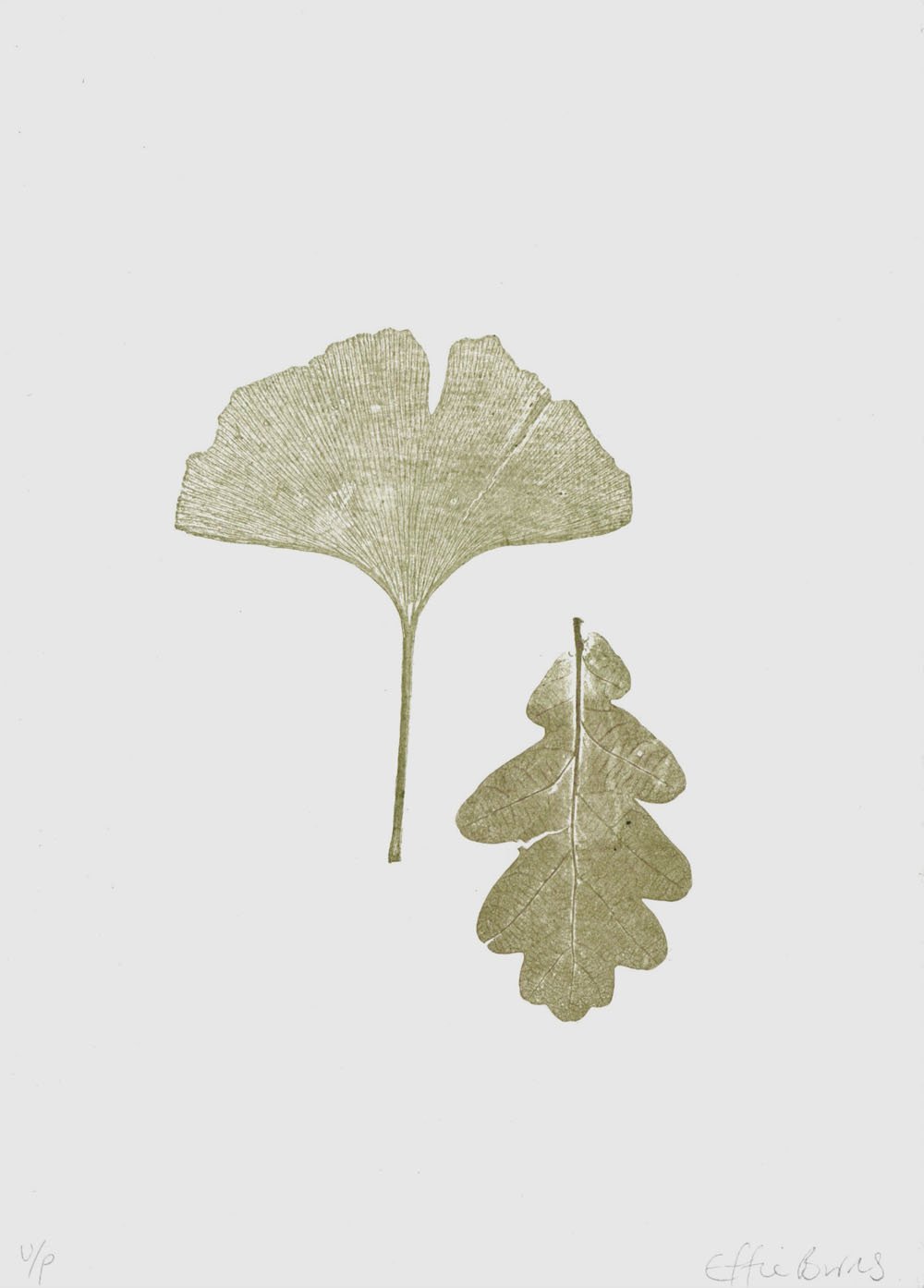
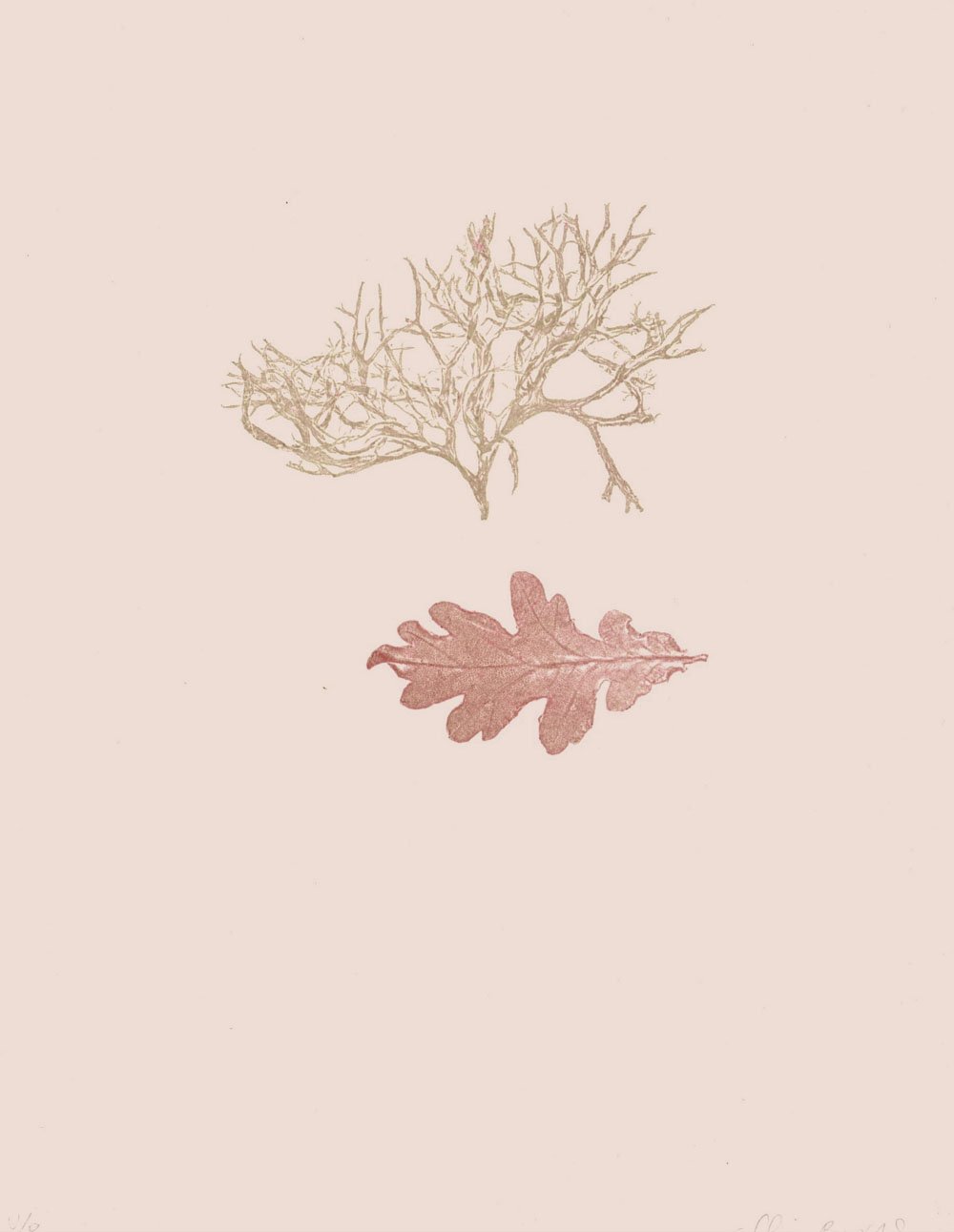
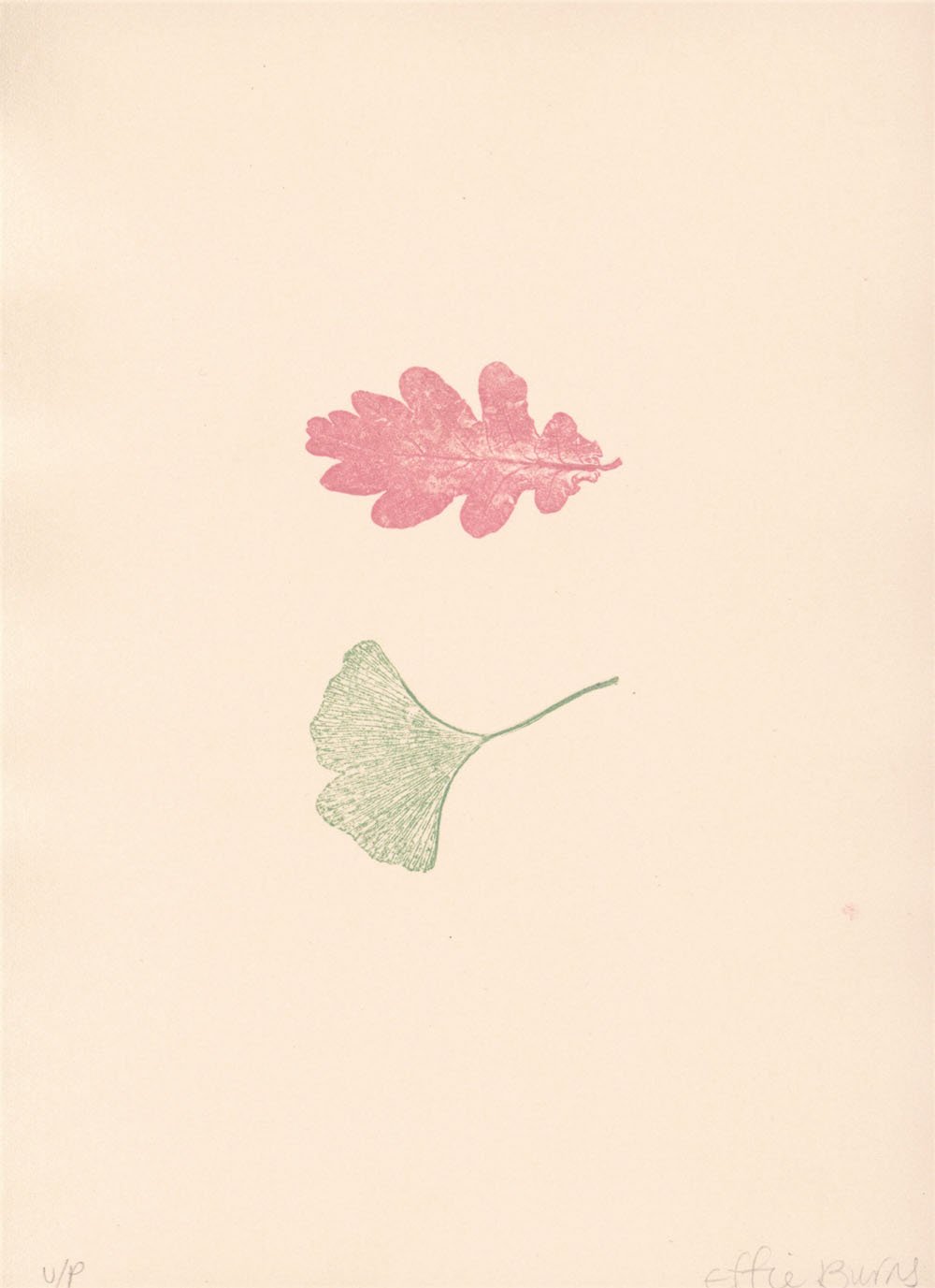

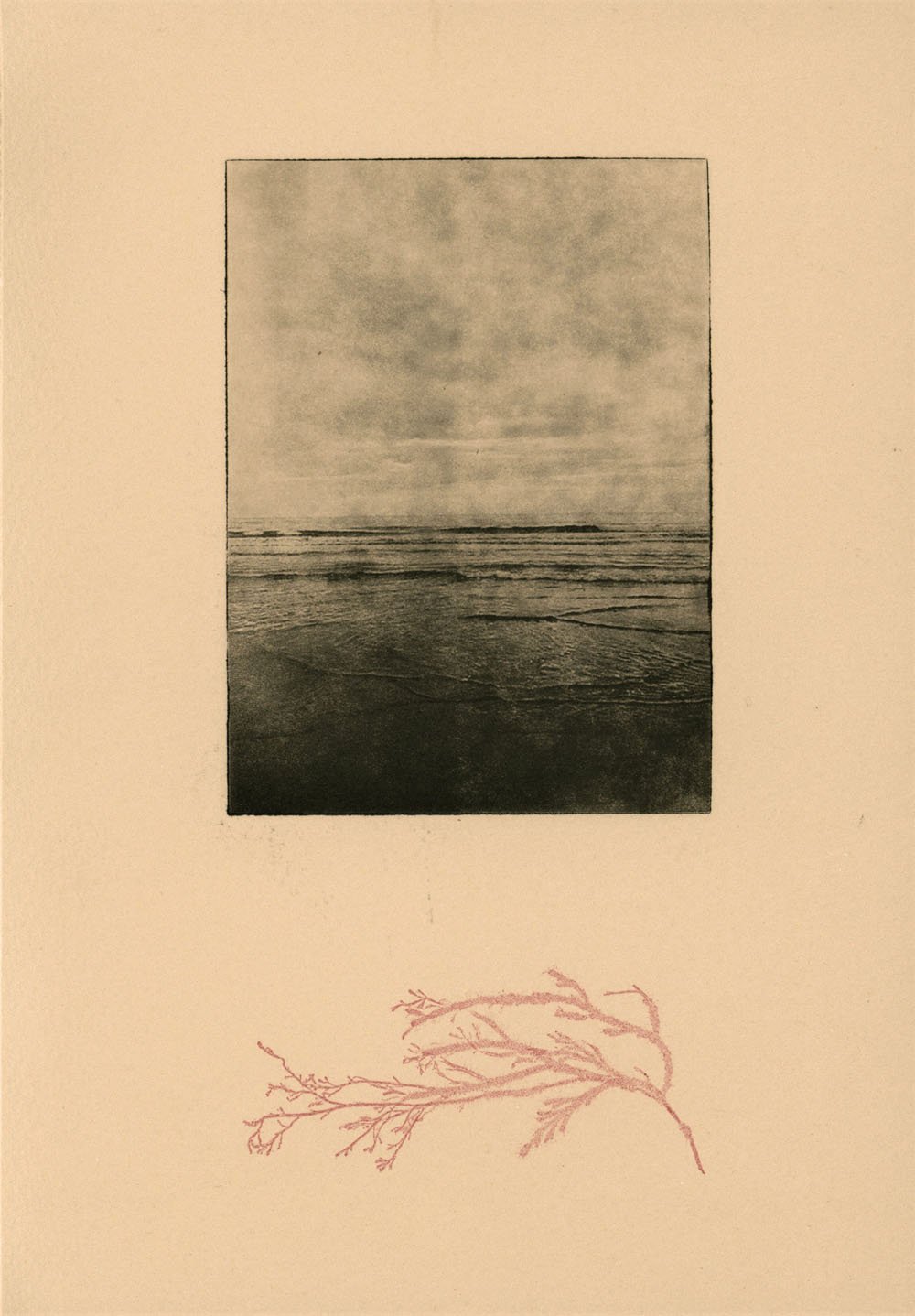


The Dome Series
This series of cast glass landscapes displayed in Victorian glass domes began in 2010, when I inherited an empty glass dome from my grandfather. The broccoli trees were first made for a show called ‘Remarkable Glass’ at Contemporary Applied Arts.
-
I often cast ordinary things like broccoli and other natural matter to create extraordinary cast glass landscapes, where things are not always what they seem.
-
The contrast of the natural and man made create a tension and balance that is also important. They become like a stage set where a narrative can play out. I enjoy using old things to tell new stories.
-
I bought many antique domes on a trip to Antwerp and they continue to be a feature of my work. From a display in the game larder of a country estate to an Arts and Crafts house in the Lake District. Most recently I created an installation in the small ante room at Harewood House. Part of their first craft biennale ‘Useful/Beautiful: Why Craft Matters’.
Fairy Tales
I am interested in the symbolism and recurrent motifs in fairy tales (glass and forests, gold and silver, thorns and knives). The plots work according to the laws of enchantment where glass plays an important role. It is used for everything from shoes and mirrors to mountains. This imagery of strong contrasts and the meaning it communicates with the viewer fascinates me.
-
Fairy tales explore the myths, structures and power play that so often define how women are seen. ‘Old Rinkrank’ is a glass mountain contained in a glass dome. First shown at the Ireland Glass Biennale it is a piece that explores the agency of women. ‘The Pink Glass Swan’ is the title of a book of feminist essays written by Lucy Lippard. The sculpture was also inspired by ‘Wayland’ the tale of a legendary blacksmith whose wife was a swan maiden or Valkyrie, set in the chill, far north.
-
I began to develop a series of pieces using a cast of my left hand during my Fellowship at the National Glass Centre. ‘Deer’ is now in their permanent collection.
The left hand symbolises the unconscious side of our minds and is associated with emotion. Hands can be used to express one’s self in a way that words often cannot.
-
The animals are archetypes and act as messengers or promises. They are common motifs that appear across diverse cultures. In combination with the hands they become magical objects that are at once familiar and delightfully strange.
